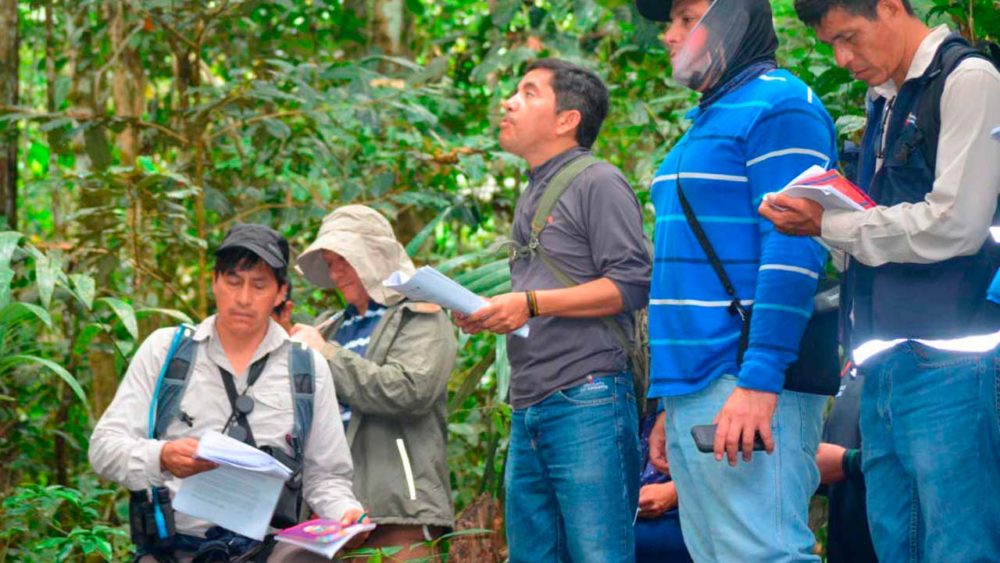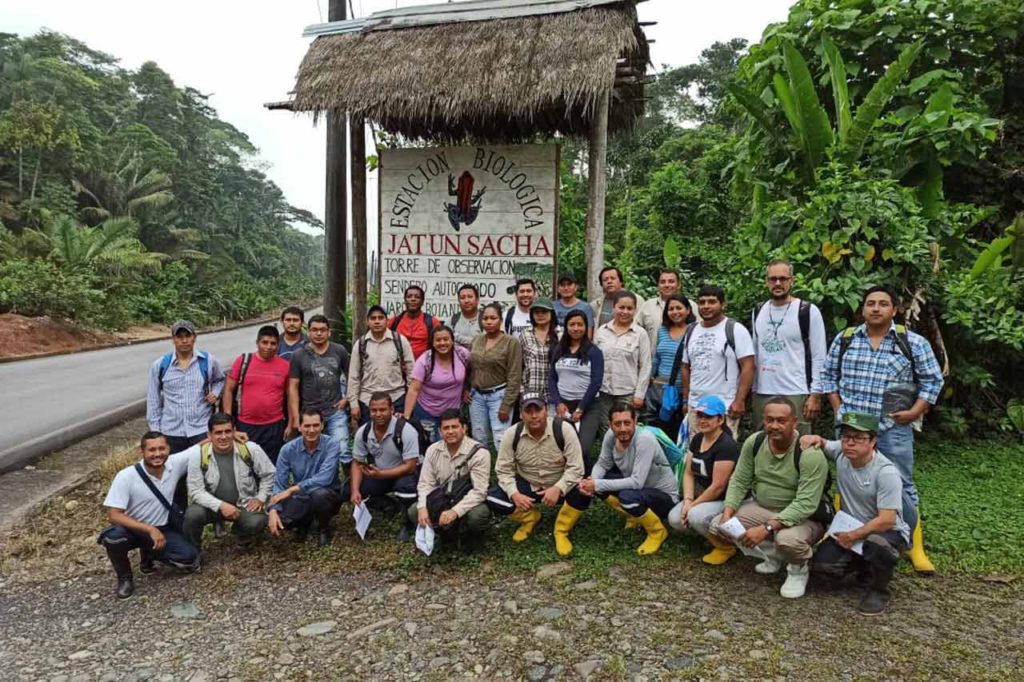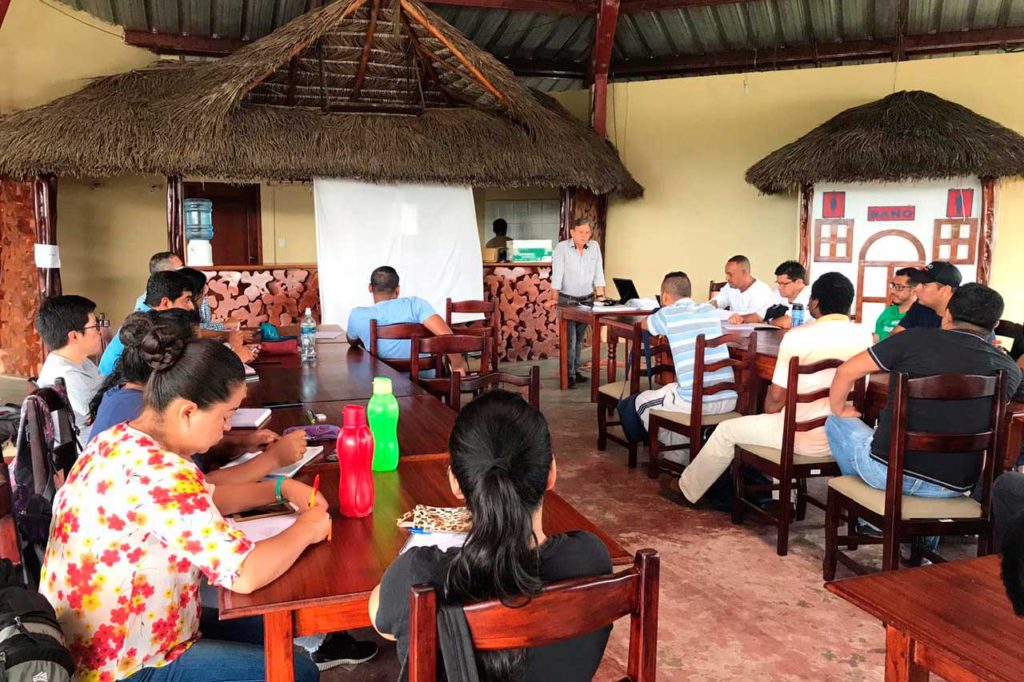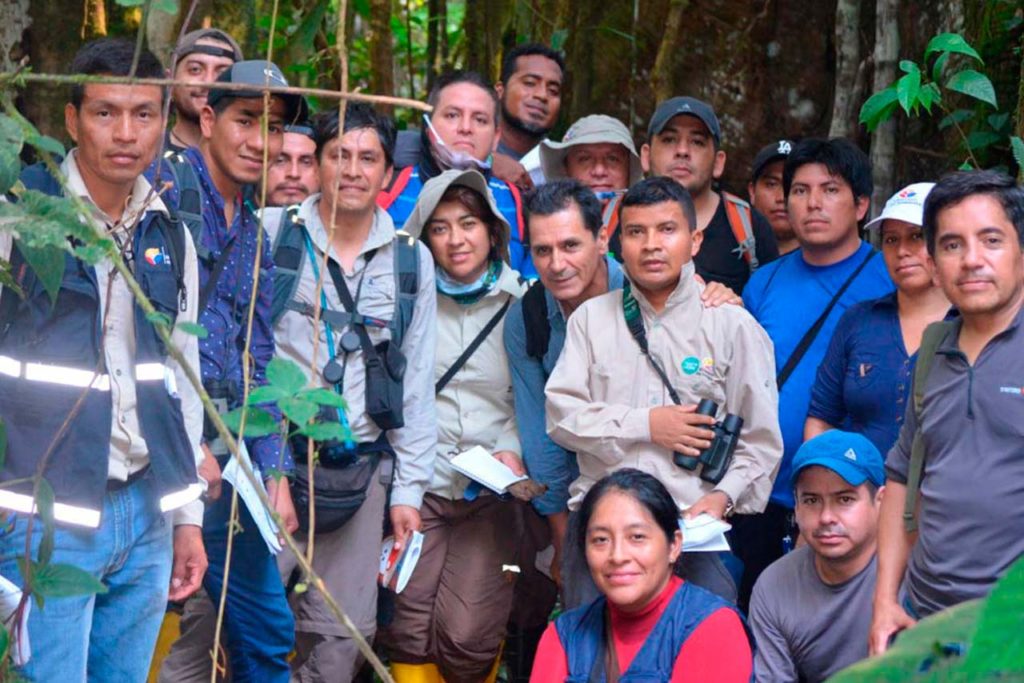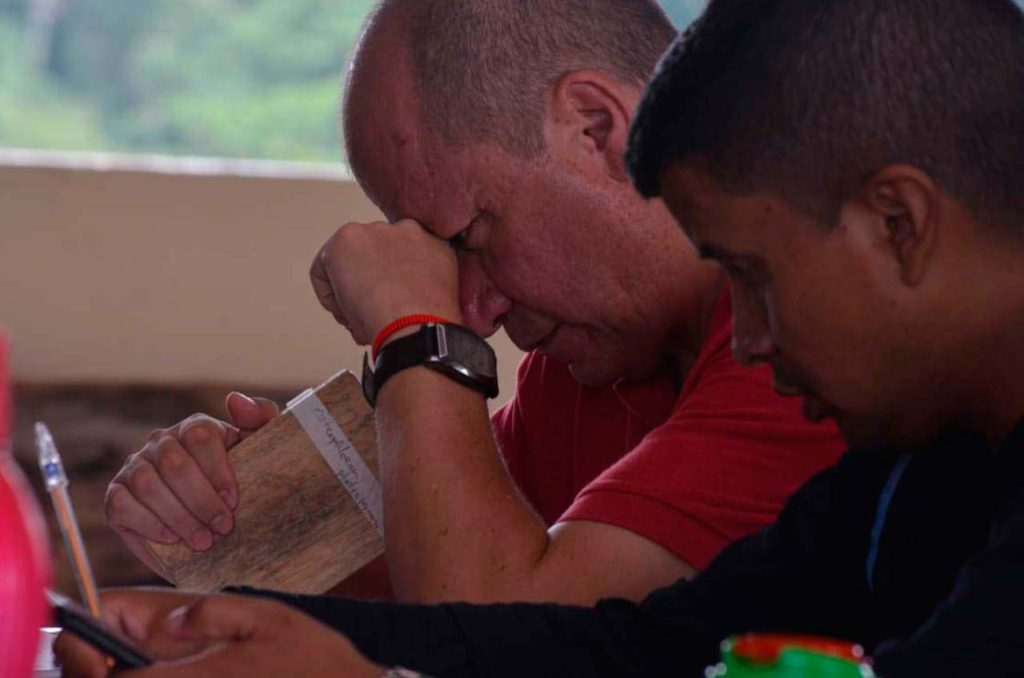Four days of training in dendrology and wood anatomy were held between November 25, 2019 and March 14, 2020, on the identification of forest species. The training was carried out by PROAmazonía and was implemented with officials from the Ministry of Environment (MAE). This series of workshops helped strengthen the skills of verifiers, advisers and technical personnel of the National Forest Directorate and Provincial Directorates throughout the country. They also supported the National Forest Control System Project (PSNCF) of sustainable forest management linked to local and national land use planning.
PSNCF is in charge of controlling the movement of forest products throughout the value chain, from the harvesting of timber in the field, its transportation and commercialization in final destination centers, and supporting wildlife trafficking control and its components. For this reason, it was essential that the personnel in charge of carrying out these tasks strengthen their knowledge and reinforce their skills. “We are learning about the morphological and organoleptic characteristics of wood. We distinguish leaves, bark, stems, etc., which are very important elements for identifying economically profitable species in the Amazon,” said Mabel Criollo, Forestry Specialist, head of the Lago Agrio technical office.
140 technicians from the Ministry of Environment of Ecuador participated in the training sessions, and were divided into groups to ensure learning. Altogether, 384 hours of training were given. The dendrological module was taught at the Jatun Sacha private reserve administered by a foundation of the same name, while the wood anatomy module was given at a lodge in the parish of Misahuallí, Tena canton, Napo province.
The dendrological training included 53 timber and non-timber species, as well as a review of plant organography and botanical classification. The dendrological characteristics of timber and non-timber forest species were also studied, including the base of the trunk (buttress or fulcrum roots, or no roots), external and internal bark (with exudations, textures), the shape of the canopy and branches, types of leaves (type, position, shape), type of inflorescence and fruit.
“The correct identification of wood helps verification at controls by the Ministry of Environment, to see what wood travels on the road. There are types of wood of great economic importance that are in high demand and sometimes scarce, so it is important to identify these woods correctly to know which species are being transported through the country,” said Walter Palacios, training instructor. 29 timber species were reviewed in the anatomical section, where the participants discovered the organoleptic characteristics (texture, color, taste, smell, grain type, and others) and anatomical characteristics of wood (pores, radii, parenchyma and porosity) that are used in macroscopic identification, and viewed macro and microscopic photographs, plates and wood samples.
This training process was to be fundamentally inclusive and 38 women participated actively, which ensured that gender criteria were adequately incorporated in the management of forest resources. This highlighted differentiated knowledge and the importance that their interests and needs be taken into account in decision-making. Forestry activity has traditionally been led by men, and in addition to helping reduce skills gaps, initiatives such as this one seek to highlight the role that women play as key stakeholders in forestry in control, verification and exploitation programs, thus strengthening management by the Ministry.
Training is an important step, which should include complementary actions such as: the preparation of regional lists of species, which all stakeholders involved in forest management must be able to identify; the assignment of an official common name to each harvested species; the implementation of continuous training processes in wood dendrology and anatomy; the correction of scientific names of species in the Forest Administration System (SAF); the reformulation of several procedures for updating scientific names; and the provision of basic work equipment such as binoculars, magnifying glasses, wood samples and illustrated identification guides, etc.
The Ministry of Environment MAE works through PROAmazonía to empower and train its workers to reduce the illegal exploitation of wood at the national level and contribute to adequate the management of the country’s natural heritage.
 Español
Español English
English
